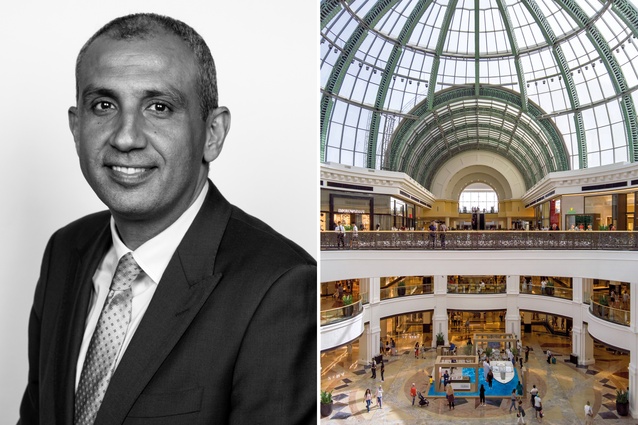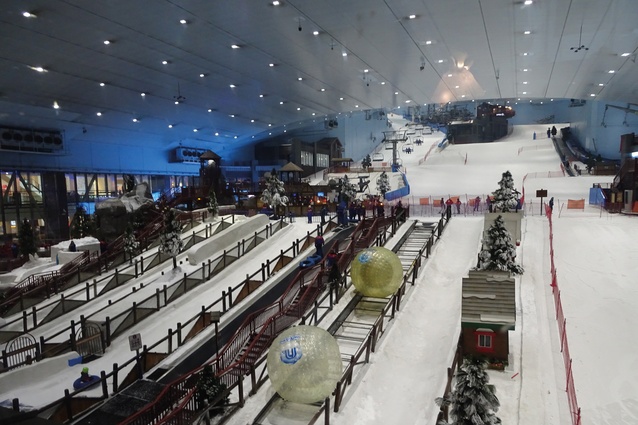Greening Dubai: Ibrahim Al-Zu’bi
Federico Monsalve caught up with the chief sustainability officer at Majid Al Futtaim, one of the largest developers of shopping malls in the United Arab Emirates.
Federico Monsalve (FM): Your company develops, among other things, mega malls in the Middle East and, interestingly, one has a ski slope. The whole concept of a ski slope in the desert, to me, sounds a bit like the antithesis of a sustainable strategy. How do you offset something that requires so much water, so much energy?
Ibrahim Al-Zu’bi (IA): It is not about offsetting; it is about doing the right thing, and about how you do it. I believe malls and developments are all over the world, so you’ll find an indoor mall, an indoor ski slope, in Europe. They have access to natural resources as well so why are they doing the same thing? The way we look at it, sustainability is embedded at the heart of everything we do and developing and creating a customer experience is what we do. We are in the business of creating great moments for everyone, every day. So, the way we do it is we minimise our negative environmental impact, if any, and maximise the socio-economic impact.
From day one, we look at how to build an energy-efficient, insulated design and, at the same time, we have policies to have access to renewables. We have a renewable plant on site that will provide a minimum of 7.5 per cent of the energy consumption from renewables. That is in the heart and basis of our designs and they must be green certified. I think the question is not how you develop but how you develop sustainably, whatever the asset is: a mall, a building, a tower, a ski slope, a playground or a field. But it is the way you build it, the way you operate it and the way you run it that is the issue.
FM: Sure, but I guess, in places like California, many home-owners, for example, have caught on to the fact that the green gardens of the ’80s and ’90s are not sustainable… and, more and more, you are seeing cacti gardens and a return to what is natural in that environment.
IA: It is a very good example but, from our side, we did not wait to plant cacti; we embedded this from the beginning. Even before investing, we have a sustainability checklist for the corporate development so, again, we build green-certified assets. We include water recycling and circulation, and energy-management systems from the beginning. We have a framework for climate adaptation.
We are fully aware of the economic and environmental impacts of what we do but the difference is that we include these considerations from the beginning of the development. It makes a big difference because you can show the financial return on investment; it makes sense, for example, to have a sewage treatment plant on site where you recycle the waste water for water-cooled chillers and for landscaping, and then you save money on water, to have local plants. So, we decided to think for the next 25 years; hence, we have the ‘Net Positive’ strategy.
FM: That is Majid Al Futtaim’s 25-year sustainability strategy, right?
IA: Yeah, Net Positive is to give more than you take. We measured our impact in carbon and water, and we said that from now – actually, from the last two years – we will be giving back to the environment more than we take, either carbon or water; you have to do it in phases. You have to measure your impact, which we did, and then set a baseline. Then you invest in efficiency which is resilient and ensures that you will have an energy or water-efficient property. The third part is investing in renewables per purchase agreements, offsetting so it is embedded within the business plan. There are no decisions made for which sustainability is not included. That is the big difference: where you can actually have a higher return on investment than you can just being reactive. We can be proactive.
FM: What is the biggest challenge for your role as sustainability chief within a big development company?
IA: One of the challenges is the scalability of the technological innovation. So, we may have a technological innovation there but, sometimes, we feel that there is a problem with the scale of that technological innovation. We work with commercial buildings and I would like to invest in and implement machine learning and artificial intelligence in my buildings to achieve my target. Sometimes, the problem I face is that I pilot technological innovation but the scalability of it isn’t yet sufficient. It is still early on. The second part, I would say, is proper platforms for think tanks where older stakeholders could sit and discuss together these innovations and the future plans for implementing sustainable growth within the public–private partnership.
This article first appeared in Interior magazine.













